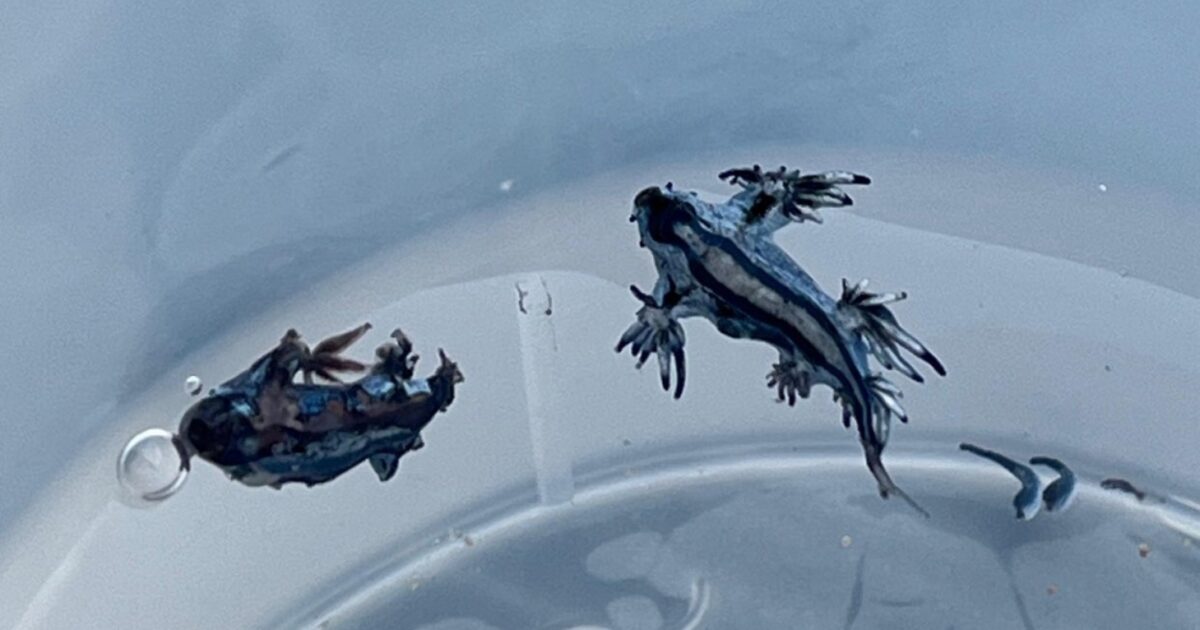The so -called “blue dragons” (Glaucus Atlanticus), which they appeared On the shores of its Mediterranean Spainthey are small naked molluscs that live mainly in the oceans, drifted by the currents on the surface of the sea. Despite their small size-they rarely exceed 3-4 cm-they impress with their metallic blue color and their unusual form, reminiscent of a fantastic creature.
They are usually found in warm waters of the Atlantic Ocean and more often on the coasts of Spain and Portugal, and cases have also been recorded in Australia, South Africa and recently in Mediterranean.
The “blue dragons” feed on jellyfish such as the famous “Portugueese Man O ‘War). These creatures have the ability to store the strong jellyfish toxins in their bodies and condensate them. Thus their stinging is even more powerful than their own prey, causing severe pain, skin burns, vomiting, fainting and in some cases serious allergic reactions.
Although impressive in appearance, Experts warn that no one should touch them, not even when they are washed off on the shores. Even dead, the “blue dragons” can cause a serious sting to anyone who touches them with bare hands.
Explainer: These creatures look beautiful, but don’t touch!
These were recently sighted on the shores of Visakhapatnam. But what are they?
These are two creatures: ‘The Blue Button’ and ‘The Blue sea dragon.’
What is Blue Button?
Its official marine name is Porpita porpita.… pic.twitter.com/4oz42U09vU
– Sudhakar udumula (@sudhakarudumula) April 13, 2024
Their appearances in the Mediterranean are considered rare, but incidents have been recorded in Spain in recent years, probably due to the rise in sea temperature and climate change.
